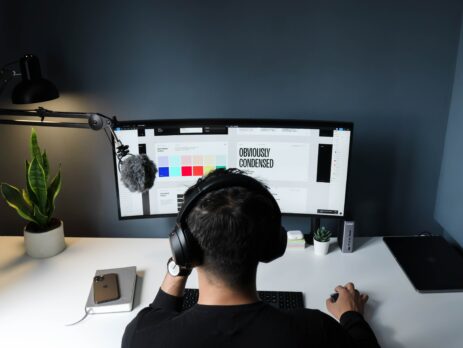Designers vs Corporations: How to Thrive As a Creative in a Corporate Environment
The corporate environment rides on the foundations of creativity. However, the nature of work is such that it can become somewhat regimented. This measure is usually put in place to ensure efficiency and performance and several other factors that determine output.
As such, creatives like designers who are generally free-spirited and require certain freedoms may find it difficult to work and thrive in this environment. Now, is it impossible for creatives to? No. So, how do you thrive as a creative in a corporate environment?
Self-Discovery
While the central theme of this article relates to figuring out how to thrive in the corporate environment, the truth is that some creatives are just not cut out for it. This is why self-discovery is critical. If you’re absolutely certain that the corporate environment is a no-no for you, then by all means, consider other alternative means of work.
Now, for designers willing to take the plunge into the corporate world, determining where you would fit best can do wonders for your adaptation and thriving. For instance, you could do well in the finance industry, real estate, or fashion. When you are certain which you prefer, it will be easier to get the work done.
Self-discovery requires that you ask yourself questions relating to the type of designer you’re looking to be. Of course, you would have to evaluate yourself on the basis of where your inclinations are leaning, and your capabilities — strengths and weaknesses. You would also have to review the work culture to see whether you fit.
If you’re all about casual and loose clothing, having to transition into wearing a tie and a suit can feel overwhelming. It can also affect your overall motivation and output. So, ask yourself as many questions as you think you need to so that you can gain clarity on where you would thrive.
Help Others Understand You
A lot of creatives like designers have their own process and no doubt you have yours too. A lot of times, your process doesn’t involve any external party, so, even when working in a corporate environment with other people, there might be no pressing need for you to communicate a lot or relate with others.
This can put you in a mysterious position where nobody can seem to figure you out. If you want to thrive in the corporate world, building interpersonal skills is critical, and you can only do this by interacting. Consider offering creative insights at work — this can significantly close the gap between your creative and professional personas.
When collaborating on projects, voice out your opinions, applaud others for their contributions, be open to working as a team, and cooperate with other team members. Of course, you have to strike a balance, so, you don’t necessarily have to be overly vocal. Just hit the sweet spot.
Ensure that your teammates know that they have your support and you will find yourself having a support system to help you make things happen. When you want to present ideas, leave it open to suggestions and modifications. Your teammates would appreciate this, and you would be well on your way to thriving.
Keep Learning
Learning new things does wonders for your creativity, and this is no different when working in a corporate environment. If you want to boost your professional life, then you should be looking at building new competencies and closing skill gaps.
If you have a penchant for learning new things and are constantly curious, then you’re absolutely on the right path. This concept is known as upskilling and you can do this by taking new skills or developing already existing skills.
For instance, as a designer, learning photography and getting interested in editing and digital arts are excellent options. You can also bring those skills into the workplace as they can aid idea visualization, corporate branding, or even UX design.
Have a Personal Project
There’s a lot of talk about work-life balance and one of the ways to achieve this is to do something you actually want to do. This would refer to a project not work-related, but more of a personal passion project.
According to PNAS, studies carried out on passion show that it is a major indicator of achievement in individualistic societies. This is why having a passion project can be a great driving force for you. Passion projects do not necessarily have to have monetary value — if anything, it’s more sentimental because it’s your thing. This in itself makes it more valuable.
This is not to say that you cannot have a passion project that serves as a source of income. However, the bottom line is that you first have to choose it, and it has to be something you really enjoy doing. A passion project can give you something to look forward to especially if your day job is starting to feel monotonous.
You get to explore your creativity and keep discovering yourself through artistic expression. To find a passion project, review what you’re passionate about, and review your interests. It doesn’t necessarily need to have a structure initially. Just get into it and watch it unravel.
As a designer, think about other aspects like photography, typography, fine art, illustration, and digital art. Also, feel free to go outside of the box. Explore!

Explore Non-Design Roles
While you may have been hired on for your design prowess, there comes a time when there might be certain roles or tasks that would take you outside of design. You should welcome such situations as an opportunity to explore and offer extra value. You could be really good at other things and you don’t know yet because you haven’t tried.
For instance, if there’s a need for someone to conduct research or compile some data, see about trying it out. It could be a welcome change from the potentially monotonous routine you already have. Granted that it might not be an easy role to fit into right away, over time, you would transition slowly until you’re comfortable. You’d be surprised to find yourself developing other skills outside of technical design.
Explore other areas especially those that can do wonders for your soft skills. Take roles that would improve your communication skills, raise your confidence levels, allow you to learn more about other aspects of the business, interact with people from outside of your immediate work circles, sit in meetings with other brilliant minds, and glean off of them.
This is the kind of experience that can come in handy at any time. Matter of fact, there’s no telling where these acts can get you. You may end up becoming way more valuable to the company other than just being a designer. You could become a designer who’s a badass problem solver or an incredible writer. Don’t box yourself in.
Again, leaving this comfort zone allows you to meet people and develop strong interpersonal relationships. Soon enough, you could be the go-to guy for certain things, especially if you’re known for timely and efficient delivery. You could also make friends among your coworkers—the type of friendship that transcends the four walls of the office.
Similarly, interfacing with a lot of people would teach you qualities such as tolerance, patience, communication, understanding, empathy, collaboration, and a deep appreciation of people as individuals.
Why Is Creativity Important in the Corporate World?
Creativity is one of the major ways that brands stand out from competitors. More often than not, most businesses have similar products, and the only way to really have an edge over others is through concerted marketing efforts. This is usually in the form of written content, visuals, graphics, and even packaging. A lack of creativity causes the entire system to slow down and all other aspects are affected.
In recent times, many organizations have looked out for individuals with creativity as a soft skill on their CV. Major corporate leaders understand the importance of fostering creativity in individuals and encouraging creative individuals by equipping them with adequate resources and tools as well as an enabling environment for them to thrive.
The thing about creativity is that a bulk of it is aimed at problem-solving. So, if your business is facing some challenges or going through certain unhealthy patterns, allowing for free thinking could pretty much be the way to come up with a practical solution. In addition, it allows employees to interact and collaborate more effectively while thinking up avenues to connect with your target demographic even better.
Similarly, creating an environment that fosters creativity leads to high levels of employee retention. A team full of creative people allows you to achieve a lot more and in a way, allowing people the opportunity to be their own individuals lets you bring out the best in them for the good of the business.
To gauge this, you can use “creative operations” to manage workflow. This process brings structure to creative work and allows you to review the entire process of creativity all through your business. You can see the individual or team in charge of a particular task and note gaps that need to be plugged.
How Can the Corporate World Foster Creativity?
Fostering creativity in the corporate world involves putting certain measures in place. These are the measures that would allow for the proper incubation of the creative process of the various individuals working in your business.
Encourage Expression
Beyond speaking out, creatives can express themselves in several other ways. These personal techniques of expression allow them to feel more comfortable and even work better. This could be in the form of a choice of clothing or having certain personal items in the office.
Within the corporate world, toning down on regimentation when it comes to dressing or desk space setup can create a positive environment and boost overall mood. When you grant people creative freedom in one area, it could spill over to others.
Make it apparent that the line of communication is open and that you’re really interested in knowing what makes your workers tick. Creative people are often very passionate, and knowing where their passions and priorities lie can help you with worker motivation.
In addition, this knowledge can help you build an inclusive environment and pass the message that you have their best interests at heart.
Provide Opportunities for Learning
Creating opportunities where your employees can upskill is one that is paramount for growth. Consider regularly putting on workshops and boot camps with experts. In addition, ensure that whatever you’re providing is something they would be interested in.
You can learn this by building relationships with them and learning present and potential interests. You can make this possible by doing any of the following:
- Making provision for informal team time for bonding and conversations that focus on how you can do better for them
- Address people at an individual level. The average employee is much more than a name tag and employee number.
Building relationships is a deliberate process and has to be very genuine. Your employees should be able to tell that you indeed care about them and their progress.

Don’t Recoil at Failure
It goes without saying that there will not always be success in the work environment. Some projects may just not work out for some reason. When this happens, the way you react is critical. The workplace should respond positively to failure.
Rather than seeking scapegoats to punish, allow it to be a learning opportunity. When you consistently do this, employees are motivated to try harder to make successes happen. They are also certain that they have the creative freedom to explore uncharted territory that could potentially be a goldmine for the business.
Overall, you would have unleashed workers who are loyal and ready to do what it takes to ensure progress and success.
In conclusion, thriving as a creative in a corporate environment involves embracing the unique challenges and opportunities that come with it. By leveraging your creative skills, adapting to the corporate culture, and continuously learning and evolving, you can make a significant impact. If you’re looking for additional support or opportunities, consider reaching out to a creative staffing agency that understands the nuances of placing creatives in corporate settings.












